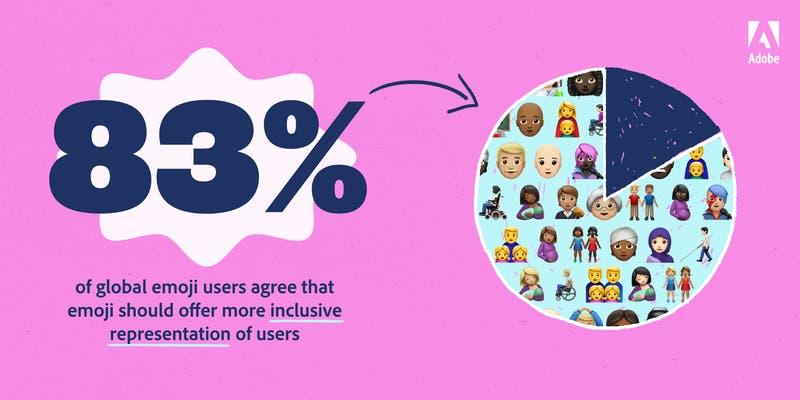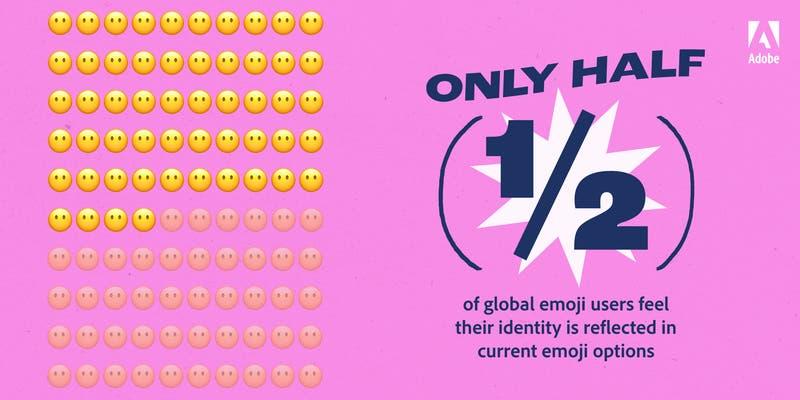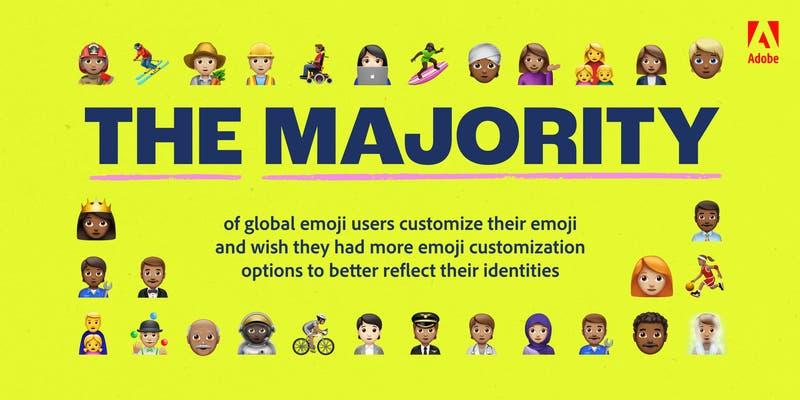
Consumers are demanding more inclusive emojis
share on
What’s your favourite emoji? Mine is probably the dancing girl in red. Global emoji users are most excited about new emoji that are gender and culturally inclusive — person feeding baby (#1), bubble tea (#2), person in tuxedo (#3). While emoji are now part of our everyday conversation, more can be done to make it inclusive, say 83% of respondents of a global study done by Adobe and Emojination. The study interviewed 7,000 frequent emoji users from United States, United Kingdom, Germany, France, Japan, Australia, and South Korea.
The study revealed that only 37% of emoji users with a disability or impairment feel represented in the currently available emoji range. Some respondents with a disability would like to see expanded emoji that show more “helping objects” — building on recent additions such as a wheelchair cane, or items like hearing aids. At the same time, some respondents with disabilities felt reducing their disability to an object could diminish their ability to express themselves authentically. But overall, the sentiment was clear that emoji needs to make inroads to help those with disabilities feel more enabled.


For people in all seven of the countries profiled, culture was the number one category of emoji that respondents wanted to see more inclusion in, followed closely by age and race / ethnicity. This is especially the case for respondents that speak more than one language, and for 41% of Gen Z, who want to see culture better reflected in emoji options. Only half of global emoji users feel their identity is adequately reflected in current emoji options.

Customisation of emoji for aspects such as skin color has undoubtedly made the medium more inclusive, but the appetite is there for more personalisation. Hairstyle or hair color, accessories, body type, and eye color are the top customisation options emoji users say would better reflect their personal appearance. Over half of global emoji users customise their emoji and wish they had more emoji customisation options to better reflect their personal identities.

Additionally, nearly seven in ten global users that identify as members of the LGBTQI2+ community are likely to customise their Emoji, with 72% wishing they had more options. The majority of global emoji users (78%) feel that more emoji customisation options can address gaps in inclusion.
Despite the challenges that remain in making emoji more inclusive, most people, especially in younger generations, believe emoji have the power to create positive change in the world around us. Around 77% of Gen Z and 75% of Millennials said that inclusive emoji can spark positive conversations about societal issues.

Other groups, worldwide, show the same level, if not more, optimism for the power of emoji. LGBTQI2+ users (63%), emoji users with a disability (61%), and multilingual Emoji users (61%) said they all feel confident that emoji can become even more progressive in the next five years. Around 76% percent of respondents agree that emoji are an important communication tool for creating unity, respect and understanding of one another.

Related Articles:
Specially-designed emojis for designers working from home
Oreo continues to spark playful connections with special emoji cookies
Twitter jumps on #SGElection fever with new custom emoji
share on
Free newsletter
Get the daily lowdown on Asia's top marketing stories.
We break down the big and messy topics of the day so you're updated on the most important developments in Asia's marketing development – for free.
subscribe now open in new window
